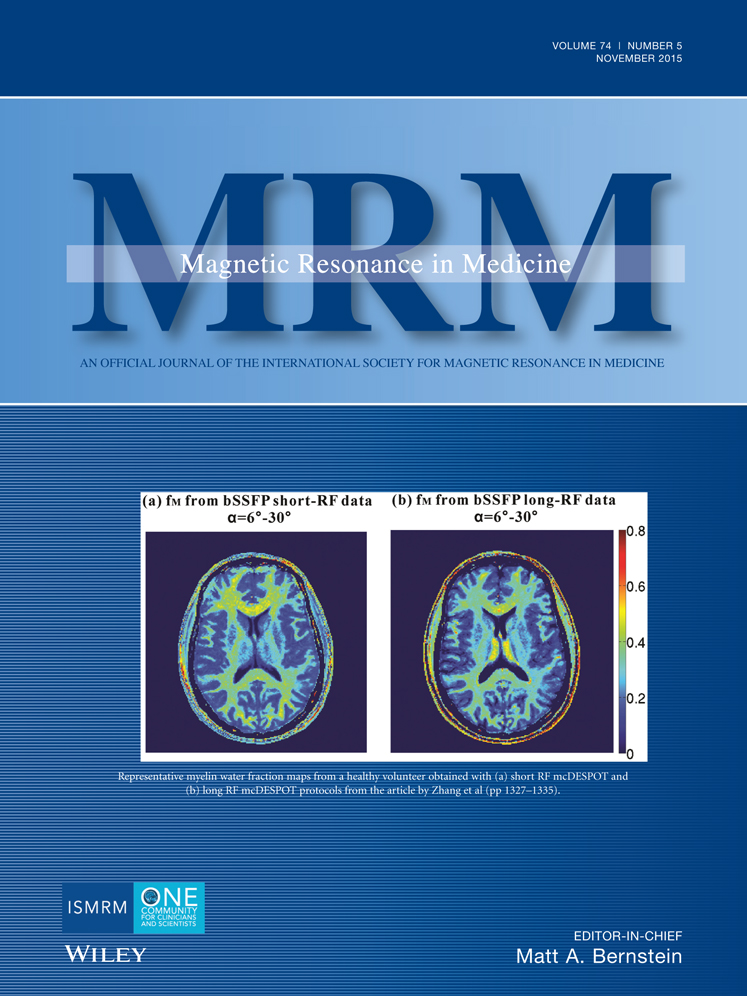Efficient production of hyperpolarized bicarbonate by chemical reaction on a DNP precursor to measure pH
Abstract
Purpose
To produce hyperpolarized bicarbonate indirectly via chemical reaction from a hyperpolarized precursor and utilize it for the simultaneous regional measurement of metabolism and pH.
Methods
Alpha keto carboxylic acids are first hyperpolarized by dissolution dynamic nuclear polarization (DNP). These precursor molecules are rapidly reacted with hydrogen peroxide (H2O2) to decarboxylate the species, resulting in new target molecules. Unreacted H2O2 is removed from the system by reaction with sulfite. Interrogation of the ratio of dissolved carbon dioxide (CO2) to bicarbonate can be used to determine pH.
Results
Conversion of hyperpolarized alpha keto acids to bicarbonate and CO2 results in a minimal loss of the spin order. The reaction can be conducted to completion within seconds and preserves the nuclear spin polarization.
Conclusion
Through a rapid chemical reaction, we can conserve the nuclear spin order of a DNP precursor to generate multiple hyperpolarized bioprobes otherwise unamenable to polarization. This indirect technique for the production of hyperpolarized agents can be applied to different precursor compounds to generate additional novel probes. Magn Reson Med 74:1406–1413, 2015. © 2014 Wiley Periodicals, Inc.




